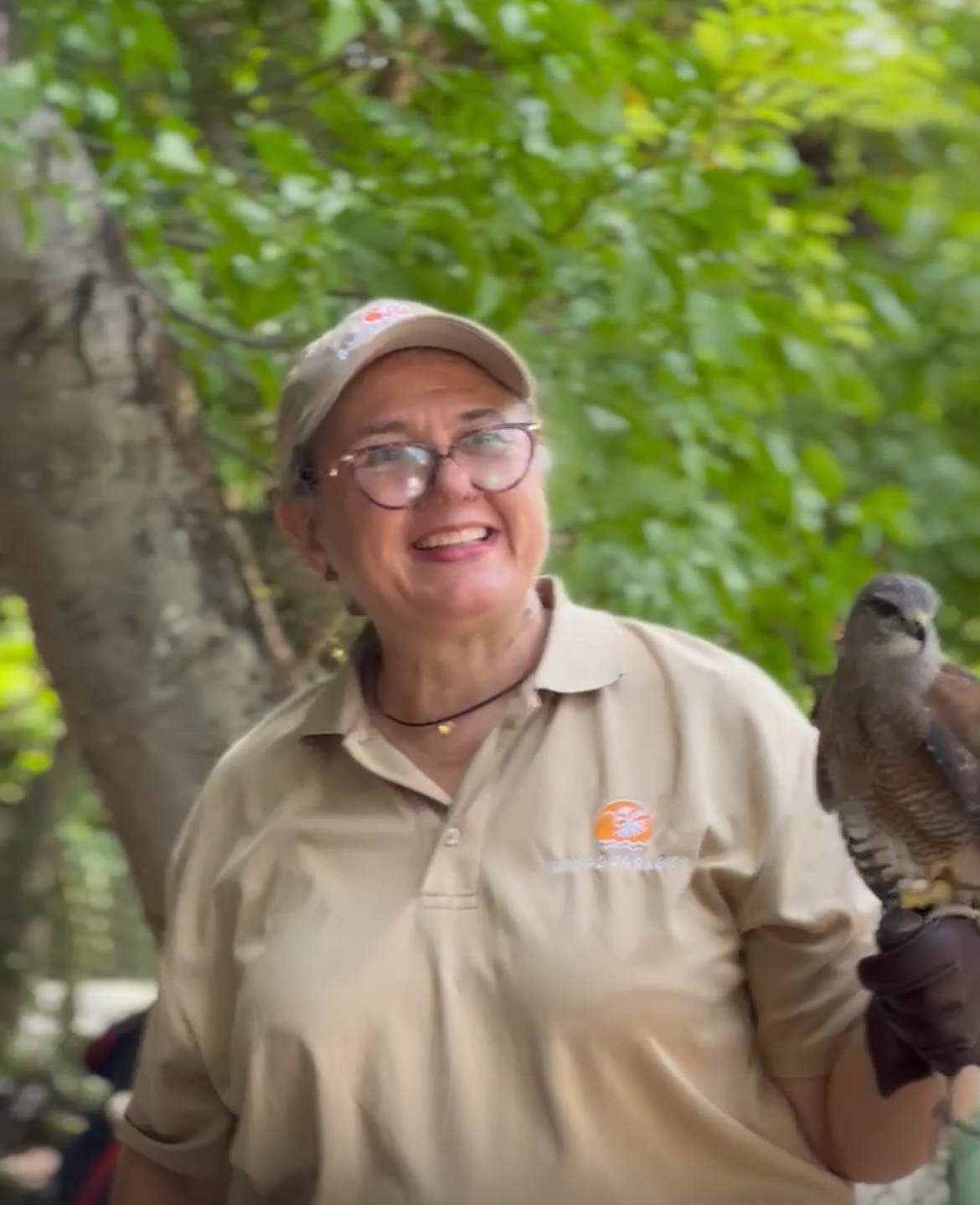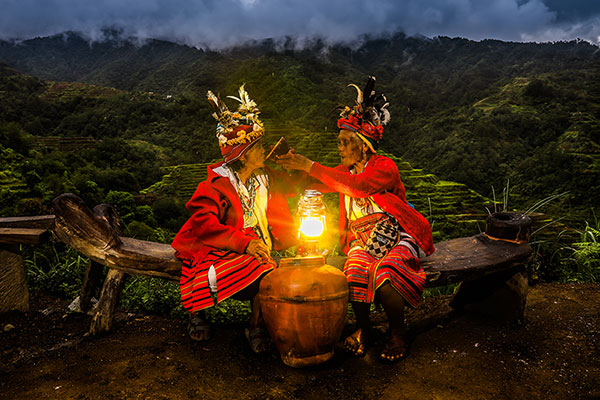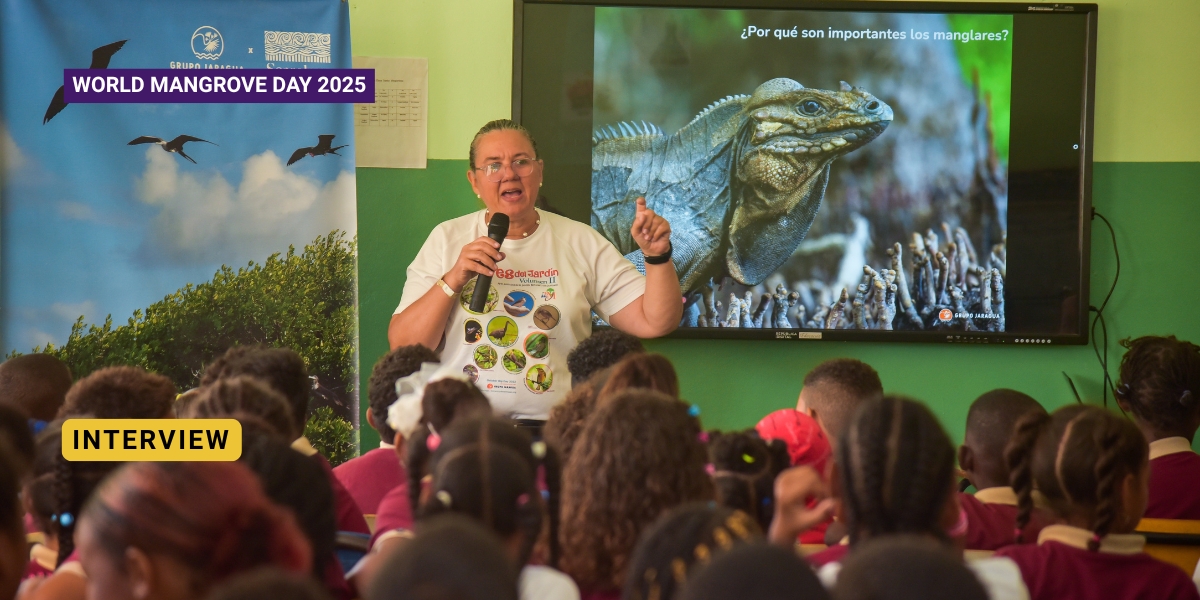Aleyda Capella talking about mangrove at Las Galeras, Samaná Province of the Dominican Republic. All images credit: Aleyda Capella, Grupo Jaragua.
Mangroves are the green shields of our ecosystem. In recent times, these green lines of defense are disappearing and with them, the protection they offer to coastlines, communities, and climate. As the world marks the International Day for the Conservation of the Mangrove Ecosystem, the urgency to act has never been greater. In the Dominican Republic, Grupo Jaragua has been on the frontlines since 2020, launching a mangrove conservation programme in the midst of a global pandemic. Their work blends ecological restoration with community-led action and sustainable livelihoods.
In this interview, Aleyda Capella, Coordinator of the Manglares Educational Campaign at Grupo Jaragua, shares the ground realities of mangrove protection, the gender dynamics often overlooked in coastal economies, and why protecting these ecosystems means protecting futures.
Let’s start at the beginning. Can you share what sparked Grupo Jaragua’s mangrove conservation and restoration efforts, especially during the early days of the COVID-19 pandemic in 2020?
For several years, Grupo Jaragua has been working with mangrove conservation, mainly in the Jaragua National Park. In 2017, along with two other NGO’s, Grupo Jaragua received a small amount of funds from Seacology to work on ecotourism linked to mangroves. Grupo Jaragua had worked in the Oviedo Lagoon located in the province of Pedernales, while the other NGOs worked in Monte Cristi and Samaná, respectively, and each in their geographical area realised that most of the people whose income depended on the mangrove barely knew about it. When this small project ended, Grupo Jaragua, together with 20 other public and private organisations, began the process of gathering information on the knowledge about mangroves from various groups such as teachers, community members, youth, etc., and after almost two years, the manglares (mangroves) educational campaign plan emerged, which began just days before the pandemic was declared. The pandemic did not demotivate us, but we used the time of confinement to design the presentations, materials, define the graphic line of the project, etc. and in the last four months of 2020, we started with virtual activities and some face-to-face activities with all the health protocols in force. Everything we experienced during 2020 prepared us to launch the campaign in 2021, with many of the materials ready.
Mangroves are often called ‘green shields’, but they’re so much more. What role do mangroves play in the Dominican Republic’s coastal resilience, biodiversity, and local livelihoods?
My country, the Dominican Republic, is part of an island in the Caribbean Sea, and every year the region is impacted by hurricanes during the hurricane season (from June to November). For this reason, mangrove forests are very important as they protect our coasts from erosion and at the same time protect the coastal communities. In addition to providing protection, mangrove forests provide food to the communities and also allow the development of livelihoods such as fishing, beekeeping, and ecotourism in various facets such as bird watching, kayaking and boating, among others, making these community allies for the conservation of mangroves as their livelihood depends on them.
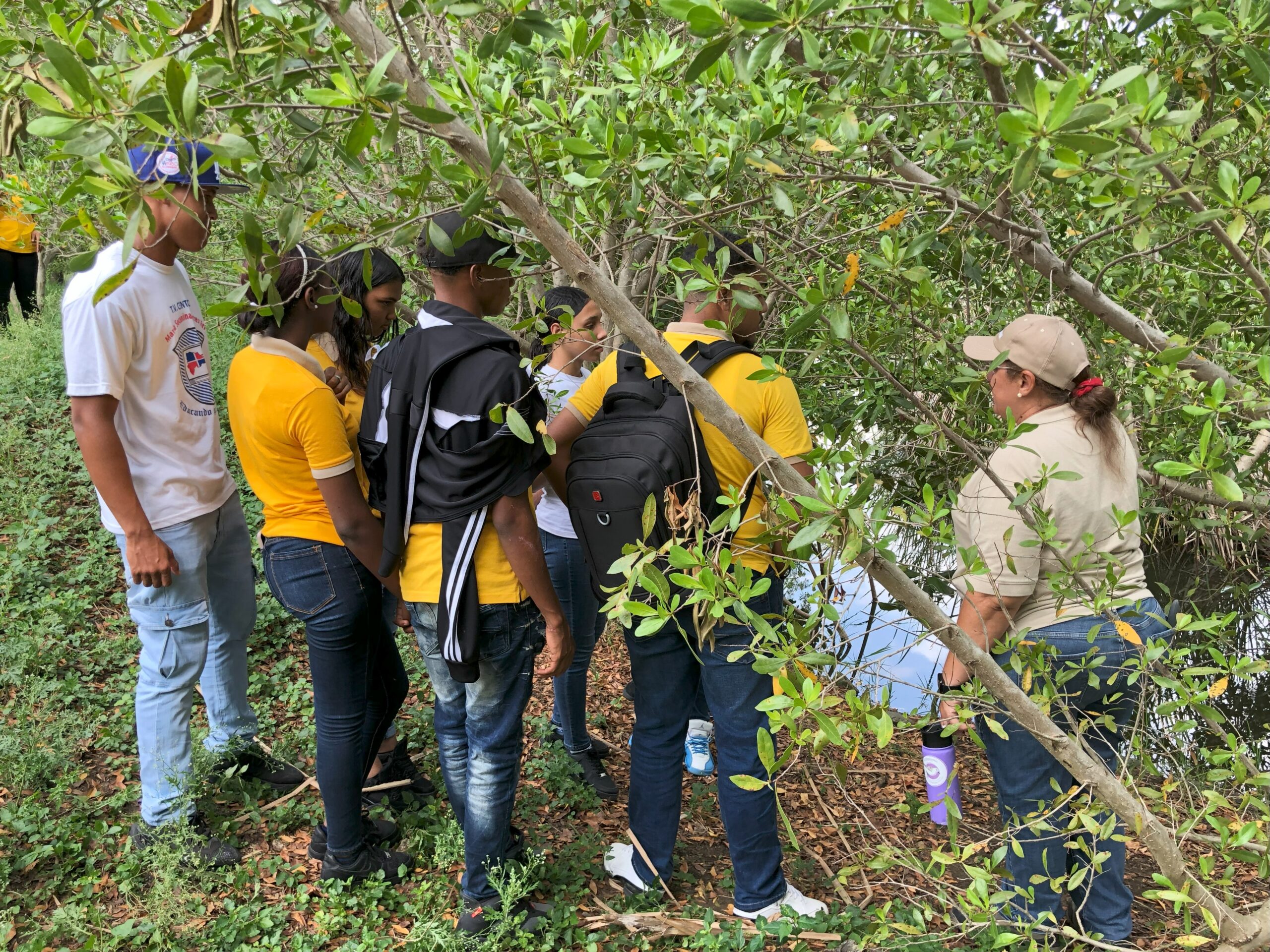
Aleyda educates a group of students about mangrove conservation.
Your programme, “Environment education in mangroves”, focuses on conservation, restoration, and sustainable livelihoods. What does this look like on the ground, and how do local communities work towards achieving this balance?
In our educational campaign about mangroves, the main focus is education and educational activities in schools, including walks in mangrove areas, so that more people are aware of their importance. In the walks or tours in the mangroves, we show the biodiversity and explain how the mangrove provides shelter and food to all the species that live there. On the aspect of restoration, I could say that it has almost become a fashion to plant mangroves, but we only promote planting in places where we have confirmed that there were mangroves in the past.
Regarding the work with the communities and the livelihoods linked to the mangroves, we work with specific groups, for example, in one of the localities we visit the most, Las Calderas, we have collaborated with one of our allies in the training of a group of beekeepers, in addition, we support them by bringing visitors so they can learn about the whole process of honey. In the same locality, we support the creation of a small dining room, and we are supporting the training of ecotourism guides who can take visitors to places of interest in the community. In addition, in another region, we have worked with the Association of Nature Guides of La Laguna de Oviedo (AGUINAOVI), who also support us in monitoring the fauna in the area of La Laguna de Oviedo, which is part of the Parque Nacimiento de Oviedo.
You’ve noted a gendered pattern in mangrove-related livelihoods such as activities like fishing or shellfish collection are mostly done by men whereas activities like beekeeping are done by women. How has this shaped your team’s approach to gender inclusion in the project?
In our country, and mainly in rural communities, gender roles are defined in jobs for men and women. For example, the men are the fishermen, and the women sell fish, both raw and prepared, in canteens or small restaurants. With respect to beekeeping linked to mangroves, the men take care of the hive and harvest the honey while the women market it and, in some cases, prepare handmade products such as soaps and candles based on honey, also for sale.
In all my time working with mangroves, I have only met one woman who went shrimp fishing with her husband. In another community, when we interviewed fishermen and asked them if the women were dedicated to fishing. They only told us that in the 1980s, there were many women fishermen and crabbers, but nowadays, very few are dedicated to these activities because young women want to study and do other less hard work.
In our activities we always try to have a balance in the participation of men and women, in many cases women outnumber men, since many of them do not participate in this type of activity.
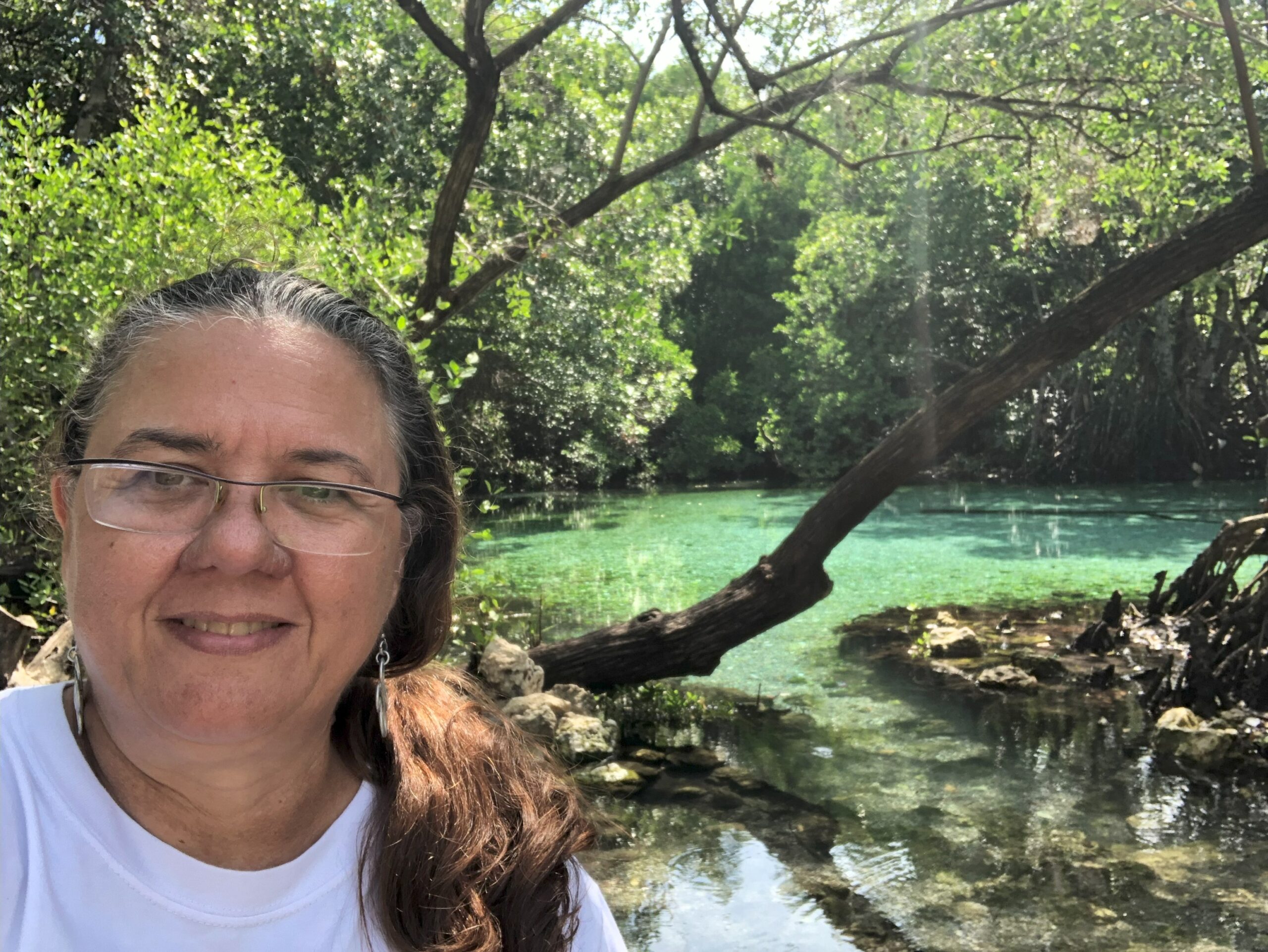
Aleyda in front of the mangroves at Caño Salado in the Pedernales Province of the Dominican Republic.
Could you share a moment or story from the field such as a challenge overcome, a surprising discovery, or a lesson that stayed with you?
A moment that always moves me, even though I have experienced it many times, is when we work with children and they tell us that they have visited the mangrove with their dad or grandfather and how they caught a fish or a crab. They feel so proud of that. I also love that at the end of the activity, they hug us and thank us for visiting their school. Those small gestures fill me with faith and hope in the work we are doing.
Every time I visit a mangrove swamp, whether for the first time or not, I feel a great connection with nature. I always learn or see something new, a bird I have never seen before or some other species and I enjoy sharing my knowledge with others.
From climate change to coastal development, what are the biggest threats to mangrove ecosystems in the Dominican Republic today? And how is your team tackling them?
In my opinion, the two main anthropogenic threats are coastal urban development and the expansion of agricultural land for rice and coconut cultivation, as well as cattle ranching. Another significant threat is the improper disposal of solid waste, which pollutes the mangroves and endangers the trees and biodiversity that inhabit them. Additionally, our status as an island nation makes us more vulnerable to climate change, as we are in the path of hurricanes, which have become more intense and frequent in recent years. These hurricanes affect the mangroves, their biodiversity, and coastal and inland communities.
In our activities, in addition to raising awareness about the threats, we share actions that everyone can carry out at home and that help not only the mangroves but also the environment in general. The actions we teach are the following: learning and sharing about mangroves since people will not conserve what they do not know; changing our consumption habits; using reusable shopping bags; rejecting straws; changing plastic toothbrushes and Q-tips for wooden ones; and reporting to the environmental authorities situations that we consider inappropriate.
As a civil society organisation, our main role is to educate the population and denounce situations that affect mangroves or the environment in general. We always provide evidence so that authorities can investigate and enforce legislation.
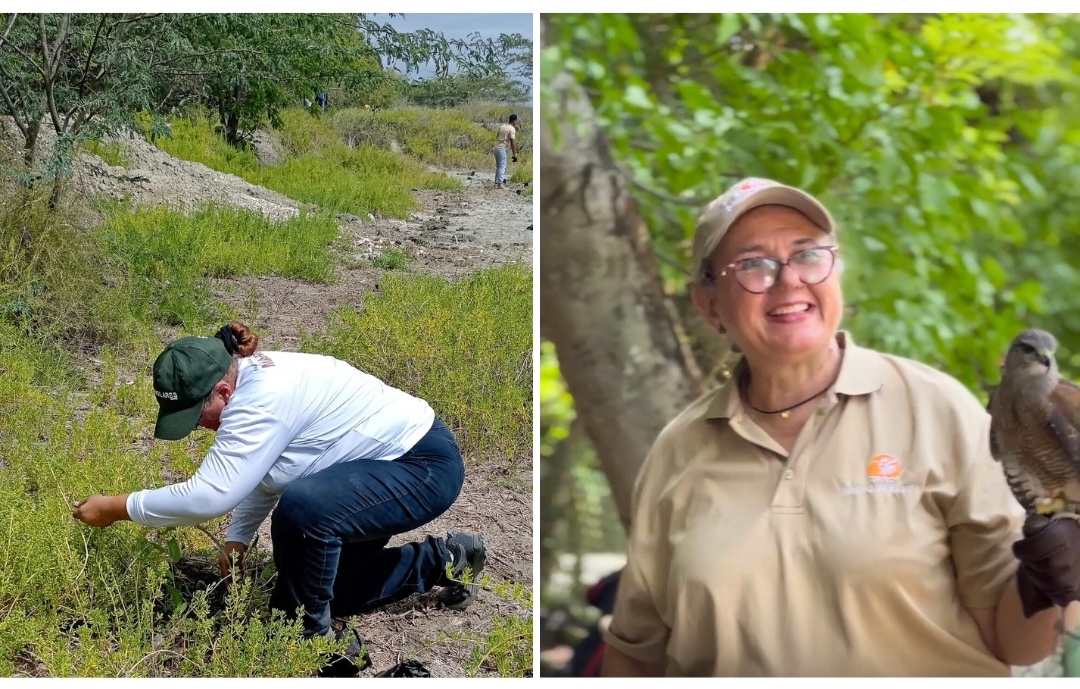
Left: Aleyda plants Buttonwood mangrove. Right: Aleyda with Ridgway’s Hawk.
Looking ahead, what is your vision for mangrove protection in the Dominican Republic and what role can women and young people play in leading that future?
First, I want the mangroves to be preserved and appreciated by all Dominicans, and I want the current area of 27,000 hectares to increase. However, I sometimes feel like I’m on the edge of a razor. Part of me is optimistic about the work we’re doing with other Dominican organisations to support mangroves and the environment. I understand that we must continue to educate people about the importance of mangrove ecosystems for us and for the planet. However, the other part of me is pessimistic because, if we do not reduce the threats, which are accelerating, we will lose our mangroves and all the ecosystem services they provide.
I want to stay optimistic and continue working to conserve mangroves. Another optimistic aspect is the number of young women working to protect mangroves and other coastal marine ecosystems. A new generation of passionate and enthusiastic women marine biologists is emerging, which assures us a generational relay that will continue to defend mangroves and the environment.
